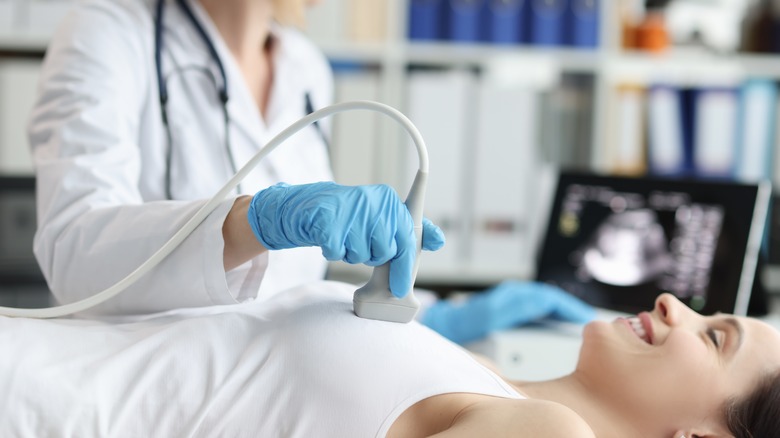Study Finds Some Breast Cancer Patients Might Benefit From Less Radiation Time
Every year, around 266,000 people are diagnosed with breast cancer in the U.S., according to the CDC. Because of this, it's vital to be on the lookout for signs and symptoms when they arise. One of the ways to help find breast cancer early is to do monthly self-exams (via the National Breast Cancer Foundation). Another is to get regular mammograms — your doctor can advise on when you should get them and how often. The CDC's general guidelines advise women over 50 to undergo this diagnostic test yearly, but the decision depends on your individual circumstances and risk factors. And while our understanding of cancer is constantly evolving and expanding, one thing is known for sure: Early detection can make all the difference in recovery and survival rates, per Weill Cornell Medicine.
After a breast cancer diagnosis, there are a number of treatment options depending on the type of cancer and how far it has spread. These include surgery, chemotherapy, and radiation therapy, the CDC explains. According to the Mayo Clinic, radiation therapy is the use of high-energy rays to target and destroy cancer cells. This may be done in conjunction with other treatments, like surgeries that preserve the breast tissue, and can come with side effects like skin irritation, swelling of the breast(s), and fatigue.
A common treatment schedule consists of one session of radiation per day for five consecutive days. This schedule typically continues for five to six weeks, depending on the cancer being treated. However, it turns out that such an aggressive approach may not be necessary for all patients, after all.
Radiation therapy times could be cut in half
A study was presented at the 2022 American Society for Radiation Oncology (ASTRO) Annual Meeting which revealed that three weeks of radiation therapy with a higher dose of radiation, as well as a radiation boost to the site after a lumpectomy, can safely deliver the same result as four to six weeks of radiation at a lower dose.
The study's principal investigator and radiation oncologist, Frank A. Vicini, noted that this would provide a particular benefit to those who have to miss work or come from far away locations for treatment. Previously, studies illustrated the efficacy and safety of the three-week radiation therapy plan for patients who had the lowest risk of developing further tumors. Those more likely to have a tumor recur, which can happen for a variety of reasons, were advised to have another week of treatment for the radiation boost that helps reduce breast tumor recurrence. However, this new study shows the boost works best when given during the same three-week time period. "This approach cuts treatment time for these patients in half," Dr. Vicini explained. "Now the comfort level is there to say to higher-risk patients, 'I can offer you this option, and it works just as well.'"
While it appears to be as effective as a longer treatment regimen, it's worth noting that the three-week radiation schedule also presented a similar cosmetic outcome and had similar side effects.

